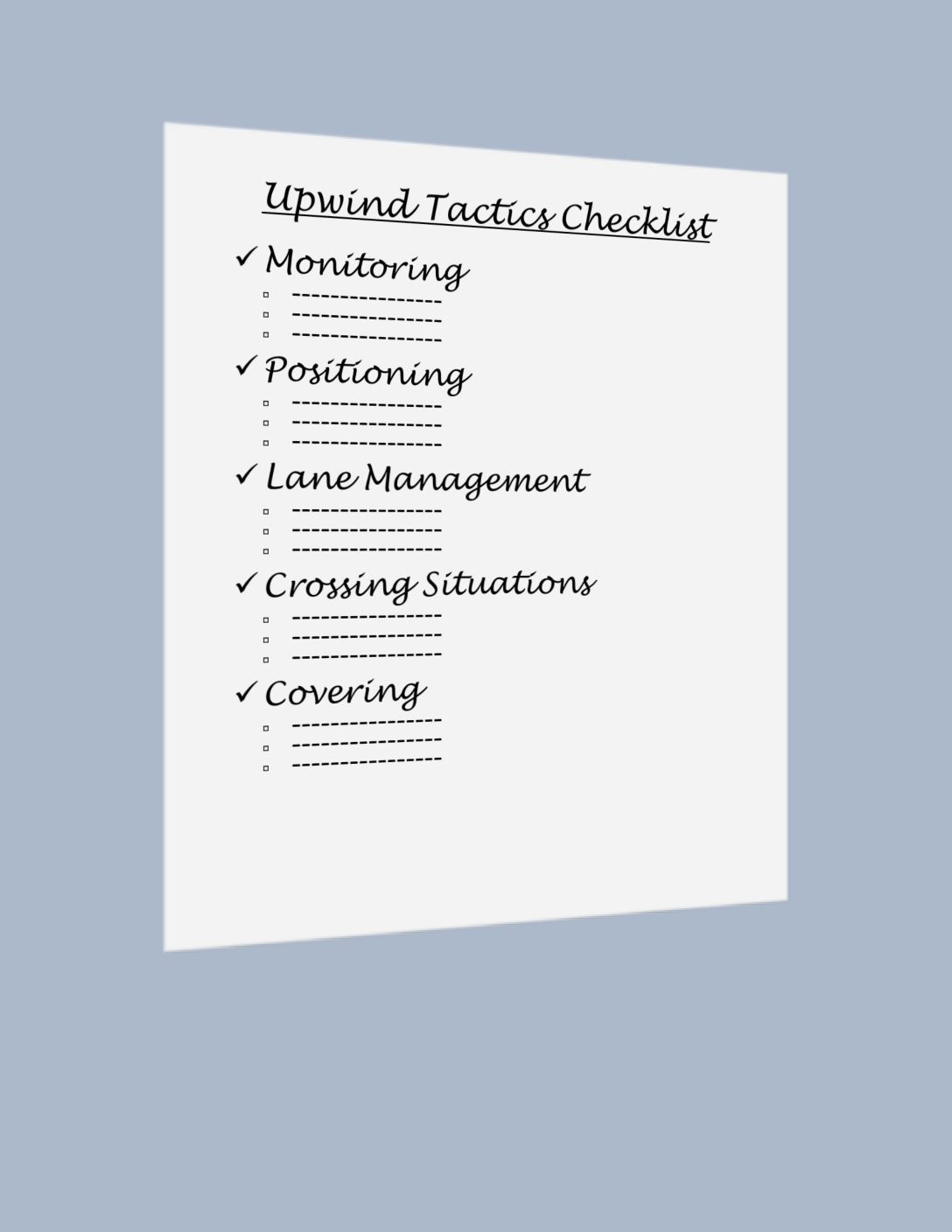Some experts say that strategy is more important than tactics. Good strategy gets you around the course faster, but it’s tempting to overthink strategy and forget that you are racing the boats around you. In this post we summarize five upwind tactics principles: monitoring, positioning, lane management, crossing situations, and covering. See the related content for more details about these items.
Five Upwind Tactics Principles
#1. Monitoring
- Monitor the fleet and know which boats are ahead, behind, and even with you.
- Anticipate situations to make better decisions.
#2. Positioning
- For most of the leg, set up on the favored side of other boats. Lead toward the favored side or the next puff/shift. If the fleet goes the other way, do not separate, but protect the side you think is favored. Only OK to separate if you’re certain.
- Later in the leg, lead other boats back to the center on the long tack. This reduces risk by avoiding the laylines.
- When in doubt, protect the right side of the course. This gives you starboard advantage and is important when you are racing a pack of boats or when you are getting close to the windward mark.
#3. Lane Management
- Set up to sail in a clear lane. Nearby boats slow you down, limit your strategic options, and present potential rules difficulties.
- Use a “blocker” to protect your lane on starboard tack. Another boat on starboard a few lengths to leeward and slightly ahead of you will force port-tack boats to either tack away or duck both.
#4. Crossing Situations
- Duck when you like your lane, even if you are on starboard tack. Accelerate while ducking to prevent cover.
- If you want to tack, you have two options:
- Lee-bow to squeeze the other boat off, giving you options to tack.
- Tack early to retain options without forcing the other boat to tack.
#5. Covering
- Loose cover when you have gained an advantage over a pack of boats. Keep the pack within the “laylines” to your stern without affecting their wind.
- Tight cover when you want to force a boat to go a different direction or slow it down.
Related Content
Upwind Tactics with Roble/Shea Sailing
Upwind Tactics for Youth with Roble/Shea Sailing
Keeping Your Lead – Covering Tactics on the Beat
Upwind Tactics – Speed and Smarts





